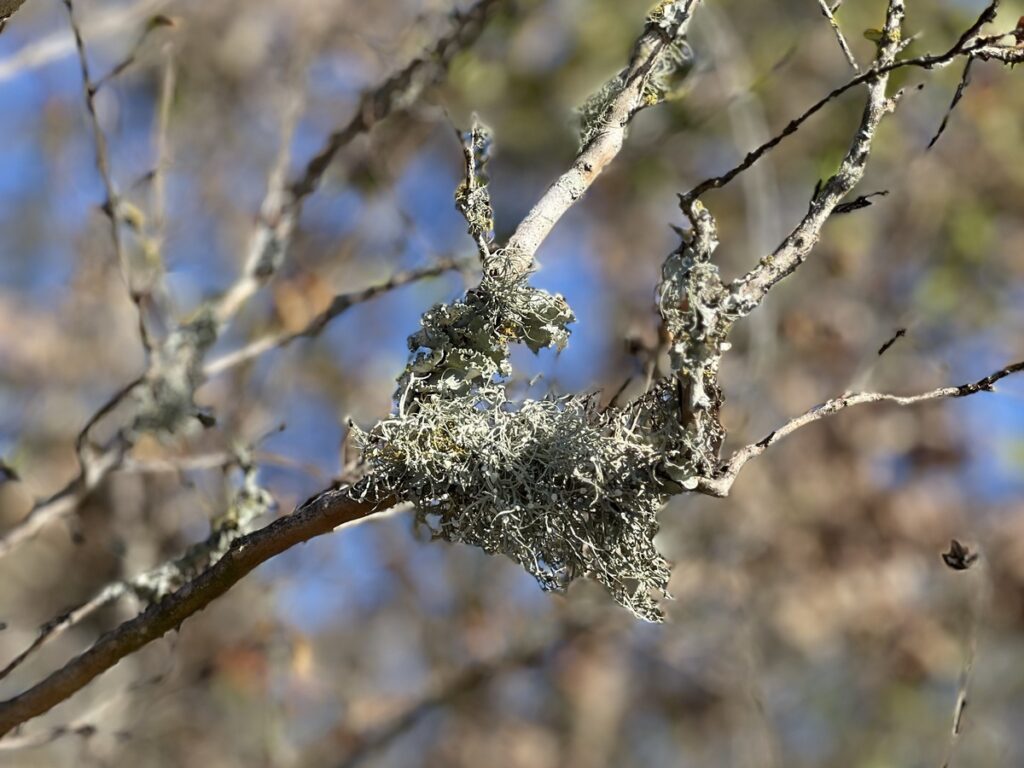Lichen are unique organisms made up of a combination of fungi and algae that are symbiotic, supporting each other.
The algae makes food through photosynthesis, which helps the fungi. In return, the fungi provide structure and retain moisture for the algae. Together, they form a self-sufficient partnership.
Lichen can grow on non-living things like rocks, powerlines, or fences but are often found on tree bark.
Trees that grow slowly tend to have more lichen on their trunks and branches. Faster-growing trees produce new growth rings each year, causing the bark to expand and any lichen on the surface to fall off. Slower-growing trees don’t expand their bark as much, allowing more lichen to grow.
Identification
There are many types of lichen around the world, with a wide range of textures and colors. Some lichen form long, ornate structures up to two inches tall. Others create small cup-like shapes or grow flat like leaves.
Different species of lichen can often be found in the same area, looking like a colorful coral reef. Lichen colors often become more vibrant after it rains.
A common lichen you may find in the environment is the cracked-shield lichen,Parmelia sulcata. It is light blue, almost white, with a flat, bark-like texture.
Another common lichen found in Texas is the slender orange-bush,Teloschistes exillis, which is bright orange and grows very low, sometimes blending in with the rocks.
Management
Lichen are self-sustaining and do not harm trees or people. While some people remove lichen to improve aesthetics, this is only a temporary fix, as lichen may continue to grow over time. It’s best to leave them alone.
They provide food and shelter for many small animals and nesting material for birds like hummingbirds and warbling vireos. Throughout history, people have used lichen for food, dyes for clothing, and medicine. Many lichen are sensitive to pollution and if present, can indicate that air quality is good.
By understanding and appreciating lichen, we can see the important role they play in our environment.
